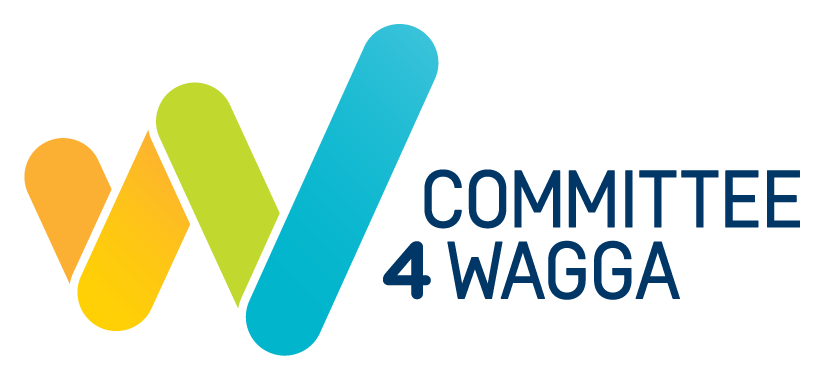High Speed Rail
Updated June 2020
High-speed rail in Australia has been under investigation since the early 1980s.
In March 2016 the Australian Government received an unsolicited proposal from a group called Consolidated Land and Rail Australia (CLARA), proposing a very fast railway (500km/h class) between Sydney and Melbourne. Rather than serving existing population centres, the proposal centred on creating 8 new inland cities as commuter towns for Sydney and Melbourne, with construction of both the cities and the railway to be funded by land sales. Clara claimed to have already secured purchase options for 40% of the land required for the cities. The nearest of these centres to Wagga Wagga was Henty.
In the May 2017 Federal Budget, the federal government announced $20 million in funding, matching that provided by state/territory or private proponents, for the development of up to 3 business cases focusing on delivering high-speed rail links between capital cities and regional Australia. Submissions will be appraised by Infrastructure Australia, with the funds to be allocated to the successful proponents. Further funding would be considered following completion of the business case(s).
In late 2018, the New South Wales State Government announced a new high speed rail network connecting Sydney and regional NSW. The government is committed to moving from high-level vision to planning and on to delivery. The Fast Rail Network Strategy will present a blueprint for how the network could be delivered. Having a strategy will ensure future investment decisions on fast rail are well considered.
Preparing the Fast Rail Network Strategy in 2019 is the first significant step in taking the network from vision to delivery. The government has committed to commence work on the first stage of the fast rail network in the current term of government. The NSW Government has appointed Professor Andrew McNaughton to lead an expert panel to provide advice to the Premier and Deputy Premier on how the government should best deliver a fast rail network to connect the state.
The government is spending $4.6 million on investigating four identified potential routes. These are Sydney to Port Macquarie, Orange/Parkes, Nowra and Canberra. Short to medium-term upgrades to and optimisation of existing routes as well as a new fleet will provide speeds of at least 200km/h. These improvements include junction rearrangements, curve easing, deviations, passing loops and level crossing removals to allow trains to run faster, more reliably and more comfortably. A dedicated, purpose-built high speed rail network would provide possible speeds of over 250km/h in the medium to long-term.
The Australian Government, in March 2019, released its 20-Year plan for a Faster Rail Network to boost our major regional centres and take pressure off our largest cities. This plan builds on top of the NSW Government Fast Rail Network Strategy released in late 2018.
The Australian Government Faster Rail plan is centred on delivering faster, more efficient and reliable journey times along strategic corridors that link major capital cities and growing regional centres.
As a first step towards this plan, the Government invested $20 million in faster rail business cases for Sydney to Newcastle, Melbourne to Greater Shepparton and Brisbane to the regions of Moreton Bay and the Sunshine Coast. These business cases are due to be completed in mid-2019.
The Australian Government has also committed funding to undertake a business case to upgrade passenger rail services between Toowoomba and Brisbane.
Building on this first step, the Australian Government is now committing $2 billion to help deliver faster rail between Melbourne and Geelong – a nationally significant commuter corridor.
The Australian Government will also invest in additional business cases for priority faster rail corridors between Sydney to Wollongong, Sydney to Parkes (via Bathurst and Orange), Melbourne to Traralgon, Melbourne to Albury-Wodonga, and Brisbane to the Gold Coast.
A dedicated National Faster Rail Agency, supported by an Expert Panel to progress the Government’s Faster Rail plan will work in close partnership with state and territory governments and private industry. It will also provide advice to the Australian Government on future faster rail opportunities around Australia, including for high speed rail.
The plan proposes that several fast rail connections to regional centres will be assessed, planned and built over the next twenty years.
The Australian Government will immediately proceed with the funding for the construction of the Geelong to Melbourne fast rail. Other rail corridors would be funded subsequent to this. This could include:
Sydney to Newcastle
Sydney to Wollongong
Sydney to Canberra
Sydney to Parkes (via Bathurst and Orange)
Melbourne to Greater Shepparton
Melbourne to Albury-Wodonga
Melbourne to Traralgon
Melbourne to Ballarat
Brisbane to Sunshine Coast
Brisbane to Gold Coast
Brisbane to Toowoomba
There is work underway to assess the viability and requirements of many of these, and the Australian Government is providing $40 million for five additional business cases. This will inform the priorities.
As is evidenced above, the provision fast rail services to Wagga Wagga does not currently appear under either of the National Faster Rail Network Plan or NSW Fast Rail Network Strategy.
The Committee for Wagga will continue to advocate for the inclusion of Wagga Wagga in the NSW Government Fast Rail Service feasibility study.
Background
The preferred alignment of a national high speed rail network would include Wagga Wagga as a regional station and connect the city with Melbourne, Canberra, Sydney and Brisbane. The network is expected to carry over 80 million passengers annually and will increase the liveability and population growth of regional cities such as Wagga Wagga.
National infrastructure such as a high speed rail network has the potential to significantly benefit regional development and should continue to be considered for future development.
Key Stakeholders:
Federal Government
Wagga Wagga City Council
Committee 4 Wagga
Businesses
Recommendation:
Continue to prepare and plan for a national high speed rail network and include Wagga Wagga as a major regional station incorporated into the proposed southern alternate route of the city.
